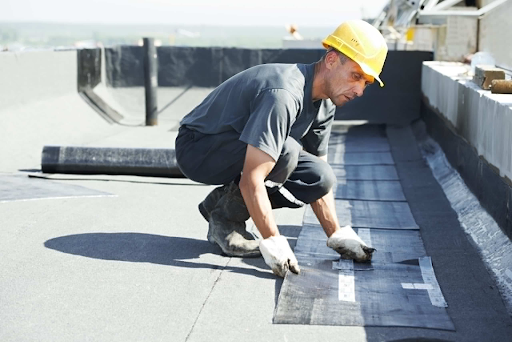Maintaining the integrity of a roof is crucial for protecting a building’s structure and ensuring the safety of its occupants. Regular roof inspections and preventative maintenance are essential practices for prolonging the lifespan of a roof and preventing costly repairs. This article delves into the benefits of these practices, highlighting the role of roofing and commercial roof repair in maintaining roof health.
Roofing: The Foundation of Building Integrity
The roof is one of the most critical components of any building. It serves as the first line of defense against environmental elements such as rain, snow, wind, and sun. Properly maintained roofing systems provide a protective barrier that safeguards the interior of the building from damage and enhances overall energy efficiency.
1. Early Detection of Issues
One of the primary benefits of regular roof inspections is the early detection of potential problems. A professional roofing inspector can identify issues such as minor leaks, damaged shingles, or deteriorated flashing before they escalate into significant problems. Addressing these issues early prevents more extensive damage that could require costly repairs or even a full roof replacement.
2. Cost Savings
Preventative maintenance helps in avoiding unexpected expenses. Regular inspections and minor repairs are typically less expensive than major repairs or replacements. By investing in routine maintenance, property owners can extend the life of their roofing system and reduce the likelihood of emergency repairs. This proactive approach ultimately leads to significant cost savings over the roof’s lifespan.
3. Enhanced Safety
A well-maintained roof contributes to the overall safety of a building. Issues such as weakened roofing materials or structural damage can pose risks to occupants. Regular inspections ensure that potential hazards are identified and addressed promptly, reducing the risk of accidents or injuries caused by roof failures.
4. Improved Energy Efficiency
An intact roofing system contributes to better energy efficiency. Gaps, leaks, or damaged insulation can lead to heat loss or gain, resulting in higher energy bills. By maintaining the roof in good condition, property owners can ensure that their heating and cooling systems operate efficiently, reducing energy consumption and lowering utility costs.
Commercial Roof Repair: Ensuring Longevity and Functionality
For commercial buildings, roof maintenance and repair are even more critical due to the scale and complexity of the roofing systems involved. Regular inspections and preventative maintenance are vital for preserving the functionality and longevity of commercial roofs.
1. Compliance with Regulations
Commercial buildings often have specific regulatory requirements regarding roof safety and maintenance. Regular inspections help ensure that the roofing system complies with local building codes and industry standards. This compliance not only enhances safety but also avoids potential legal issues or fines.
2. Prevention of Business Disruptions
For businesses, unexpected roof problems can lead to disruptions in operations. Leaks or structural issues may affect inventory, equipment, or workspaces, resulting in downtime and financial losses. Regular roof maintenance helps in preventing such disruptions by addressing potential issues before they impact business operations.
3. Preservation of Property Value
A well-maintained commercial roof contributes to the overall value of the property. Prospective buyers or tenants consider the condition of the roofing system when evaluating a commercial building. Regular inspections and maintenance ensure that the roof remains in good condition, preserving the property’s market value.
4. Increased Lifespan of the Roof
Commercial roofs are a significant investment, and extending their lifespan is crucial for maximizing return on investment. Regular maintenance and timely repairs help prevent premature deterioration and prolong the life of the roofing system. This approach ensures that the commercial roof serves its intended purpose effectively for years to come.
Conclusion
Regular roof inspections and preventative maintenance are essential practices for maintaining the health and functionality of both residential and commercial roofing systems. By addressing issues early, property owners can save on repair costs, enhance safety, improve energy efficiency, and preserve the value of their property. For commercial buildings, these practices are crucial for ensuring regulatory compliance, preventing business disruptions, and extending the lifespan of the roof.
Investing in regular roof inspections and preventative maintenance is a proactive approach that pays long-term dividends. Whether for residential or commercial properties, maintaining the roof in optimal condition is key to protecting the building’s integrity and ensuring the safety and comfort of its occupants.









